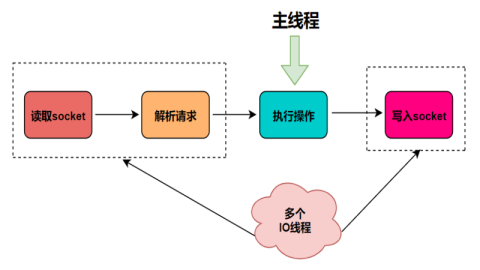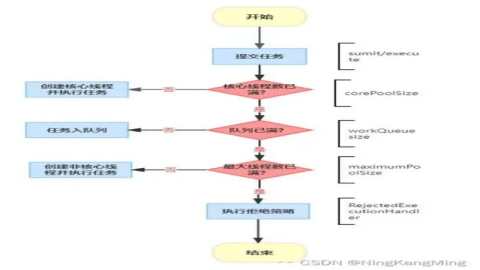转载声明:文章来源https://blog.csdn.net/wuyoudeyuer/article/details/143093042
1、引言
关于大数据算法设计技术,主要有:
精确算法设计
并行算法
近似算法
随机化算法
外存算法
…
2、大数据算法设计技术
2.1 精确算法设计方法
2.1.1 方法与分类
精确算法是指在满足特定条件下,能够得到问题最优解的算法。在大数据场景下,精确算法设计方法主要包括:
动态规划:通过将问题分解为子问题,求解子问题最优解,从而得到原问题最优解。
回溯法:一种暴力搜索方法,通过递归地遍历所有可能解,找到最优解。
分支限界法:结合回溯法和剪枝技术,提高搜索效率。
2.1.2 代码示例
代码示例:
1 2 3 4 5 6 7 8 9 10 11 12 13 14 15 16 17 18 19 20 21 22 23 24 25 26 27 28 | # -*- coding:utf-8 -*-# @Time : 2024-10-01# @Author : Carl_DJ'''实现内容: 使用动态规划解决背包问题'''def knapSack(W, wt, val, n): dp = [[0 for _ in range(W + 1)] for _ in range(n + 1)] for i in range(n + 1): for w in range(W + 1): if i == 0 or w == 0: dp[i][w] = 0 elif wt[i-1] <= w: dp[i][w] = max(val[i-1] + dp[i-1][w-wt[i-1]], dp[i-1][w]) else: dp[i][w] = dp[i-1][w] return dp[n][W]# 示例val = [60, 100, 120]wt = [10, 20, 30]W = 50n = len(val)print(knapSack(W, wt, val, n)) |
2.2 并行算法
并行算法是指利用多个计算资源(如CPU、GPU)同时处理数据,提高计算速度。代表性技术有:
MapReduce:分布式计算框架,将大数据处理任务分为Map和Reduce两个阶段。
Spark:基于内存的分布式计算框架,提供丰富的API和生态支持。
1 2 3 4 5 6 7 8 9 10 11 12 13 14 15 16 | # -*- coding:utf-8 -*-# @Time : 2024-10-01# @Author : Carl_DJ'''实现内容: 使用multiprocessing库进行并行计算'''from multiprocessing import Pooldef square(x): return x * xif __name__ == '__main__': with Pool(4) as p: print(p.map(square, range(10))) |
2.3 近似算法
近似算法通过牺牲部分精度,换取计算速度。适用于实时性要求较高的场景。代表性技术有:
局部搜索:从一个初始解出发,通过迭代搜索邻域解,达到优化目标。
遗传算法:模拟生物进化过程,通过遗传、交叉和变异操作,寻找最优解。
1 2 3 4 5 6 7 8 9 10 11 12 13 14 15 16 17 18 19 20 21 22 23 24 25 26 27 | # -*- coding:utf-8 -*-# @Time : 2024-10-01# @Author : Carl_DJ'''实现内容: 使用近似算法计算数据集基尼不纯度'''def gini_index(groups, classes): n_instances = float(sum([len(group) for group in groups])) gini = 0.0 for group in groups: size = float(len(group)) # avoid divide by zero if size == 0: continue score = 0.0 for class_val in classes: p = [row[-1] for row in group].count(class_val) / size score += p * p gini += (1.0 - score) * (size / n_instances) return gini# 实例groups = [[['A'], ['B']], [['C'], ['D']]]classes = ['A', 'B', 'C', 'D']print(gini_index(groups, classes)) |
2.4 随机化算法
随机化算法利用随机性简化算法设计,提高计算效率。代表性技术有:
蒙特卡洛算法:通过随机抽样方法,估计问题解的分布。
拉斯维加斯算法:以随机方式搜索解空间,直到找到满意解。
1 2 3 4 5 6 7 8 9 10 11 12 13 14 15 16 17 18 19 20 21 | # -*- coding:utf-8 -*-# @Time : 2024-10-01# @Author : Carl_DJ'''实现内容: 用随机化算法解决最小化集合覆盖问题'''import randomdef randomized_set_cover(universe, subsets): covered = set() while len(covered) < len(universe): subset = random.choice(subsets) covered.update(subset) return covered# 示例universe = set(range(1, 11))subsets = [{1, 2, 3}, {4, 5}, {6, 7}, {8, 9, 10}]print(randomized_set_cover(universe, subsets)) |
2.5 外存算法
外存算法是一种针对大规模优化问题的有效方法,通过迭代求解线性规划问题,逐步逼近最优解。代表性技术有:
交替方向乘子法(ADMM):将问题分解为多个子问题,通过迭代求解子问题,达到全局最优。
内点法:在可行域内部寻找最优解,避免求解边界问题。
1 2 3 4 5 6 7 8 9 10 11 12 13 14 15 16 17 18 19 20 | # -*- coding:utf-8 -*-# @Time : 2024-10-01# @Author : Carl_DJ'''实现内容: 使用外存算法处理大数据文件'''def process_large_file(file_path): with open(file_path, 'r') as file: for line in file: # 处理每一行数据 process_line(line)def process_line(line): # 实现具体的处理逻辑 print(line.strip())# 示例process_large_file('large_dataset.txt') |
2.6 现代优化算法
现代优化算法包括神经网络、深度学习、强化学习等,适用于复杂非线性问题。代表性技术有:
遗传算法:模拟自然选择和遗传学原理的搜索启发式算法,它通过模拟生物进化过程中的遗传和变异机制来优化问题解。
蚁群算法:种模拟蚂蚁觅食行为的优化算法,它通过蚂蚁之间的信息传递和正反馈机制来寻找最优路径。
1 2 3 4 5 6 7 8 9 10 11 12 13 14 15 16 17 18 19 20 21 22 23 24 25 26 27 28 29 30 31 32 33 34 35 36 37 38 39 40 41 42 43 44 45 46 47 48 49 50 51 52 53 54 55 56 57 58 59 60 61 62 63 64 | # -*- coding:utf-8 -*-# @Time : 2024-10-01# @Author : Carl_DJ'''实现内容: 使用遗传算法优化函数'''import numpy as np# 适应度函数,这里简单地使用个体基因的总和def fitness_function(individual): return sum(individual)# 遗传算法主函数def genetic_algorithm(pop_size, gene_length, generations): # 初始化种群,每个个体是一个长度为gene_length的数组,每个基因是0或1 population = np.random.randint(2, size=(pop_size, gene_length)) # 遗传算法的主要循环 for generation in range(generations): # 计算适应度 fitness_scores = np.apply_along_axis(fitness_function, 1, population) # 生成新一代 new_population = [] for _ in range(pop_size): # 选择操作:轮盘赌选择 parent_indices = np.random.choice(range(pop_size), size=2, replace=False, p=fitness_scores/fitness_scores.sum()) parent1, parent2 = population[parent_indices] # 交叉操作:单点交叉 crossover_point = np.random.randint(1, gene_length) child = np.concatenate([parent1[:crossover_point], parent2[crossover_point:]]) # 变异操作:随机变异 mutation_mask = np.random.rand(gene_length) < 0.01 # 假设变异率为1% child[mutation_mask] = 1 - child[mutation_mask] # 翻转变异位 # 将新个体添加到种群中 new_population.append(child) # 更新种群 population = np.array(new_population) # 打印当前代最好的适应度 print(f"Generation {generation}: Best Fitness = {fitness_scores.max()}") # 返回最后一代的最佳个体和适应度 best_fitness_index = np.argmax(fitness_scores) best_individual = population[best_fitness_index] best_fitness = fitness_scores[best_fitness_index] return best_individual, best_fitness# 参数设置pop_size = 100 # 种群大小gene_length = 10 # 基因长度generations = 50 # 迭代代数# 运行遗传算法best_individual, best_fitness = genetic_algorithm(pop_size, gene_length, generations)print(f"Best Individual: {best_individual}")print(f"Best Fitness: {best_fitness}") |
3、总结
大数据算法设计技术是处理和分析大规模数据集的关键。
通过采用精确算法设计方法、并行算法、近似算法、随机化算法、外存算法和现代优化算法等多种技术手段,可以从海量数据中提取有价值的信息。
在技术融合,交叉融合的当下, 掌握大数据算法,应用于工作中,是必不可少的一环。






帖子还没人回复快来抢沙发